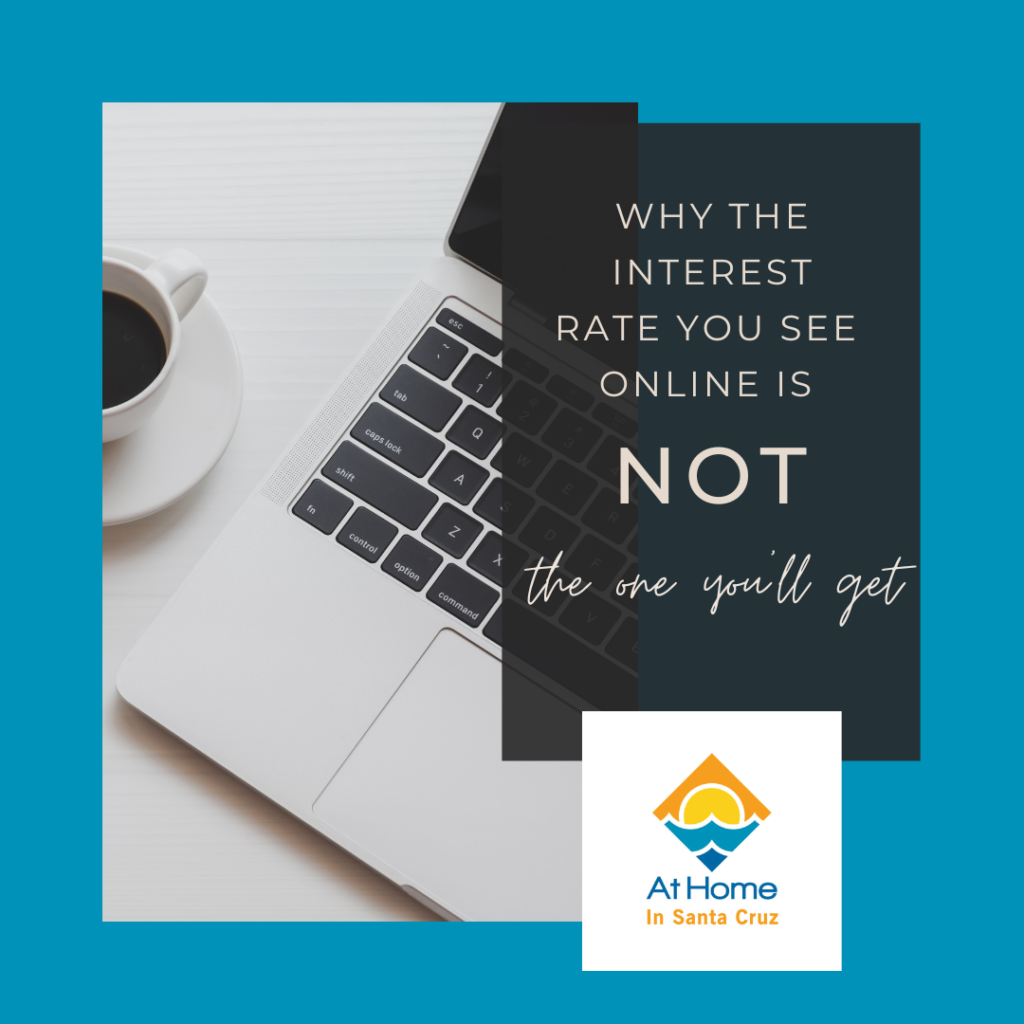
Did an interest rate catch your attention the last time you were looking online? Maybe you’ve been thinking about buying a home, buying an investment property, refinancing, or getting a line of credit. Well, it’s very rare that the interest rate you see online will be the one you get from a lender.
There are many factors that determine the interest rate any of us receive. Here’s a great rundown for you or anyone you know planning on getting a mortgage or refinancing.
How Interest Rates Work
Let’s cover the basics first. Interest rates for mortgages fluctuate daily, going up or down.
Freddie Mac posts the average U.S. rate for popular mortgages every Thursday after surveying lenders across the country. These are the rates that you will see or hear about in news media reports.
Lenders Want Your Business
Mortgage lenders promote their own interest rates on their websites. However, what you see is not necessarily the one you’ll get.
Usually these “promo” rates are based on the highest consumer credit score, and they are really an average of rates that they offer, so you will need to read the fine print to find out any restrictions or requirements. Most lenders offer several different mortgage products, some better (less costly) than others.
What Impacts Your Rate
Here is a breakdown of the variables a lender will consider:
Credit Score – Your credit score and credit history play the biggest role in what rate you will be offered. It lets lenders know if you’re a good risk or not as a borrower. A high score of 740 or more means you will be offered a lower rate since you have proven you can handle credit responsibly. Even if your score is considered “good” which would be anything above 700, you will end up with a higher interest rate if it’s not at that 740 cut off or above. Bottom line, the lower your credit score, the higher the rate since you’re viewed less credit worthy.
Down payment – There are different rates depending on how much you put down toward your purchase. The larger your down payment, the lower the interest rate because the loan is deemed less risky to the lender. A bank views your loan more positively if there is more equity in your home. To qualify for some of the best mortgages, you need to be able to put down 20%. If you put 25% down, you get an even lower rate.
If you have less than 20% down, your interest rate will be slightly higher and you might also have to add private mortgage insurance (PMI) to your monthly mortgage payment.
Type of Property – Did you know that condos have slightly higher interest rates than single-family detached homes? A condo loan could be .125% to .375% higher since lenders view condos as riskier since they will be dealing with other condo owners and your homeowner’s association as well. Multi-unit properties and second homes offer different mortgage rates as well.
Different Products – The interest rate also depends on the mortgage product. There are jumbo loans (loans over the conforming loan limit), FHA loans, VA loans, adjustable rate loans, and conventional loans — all of which have different rates, fees and requirements.
Loan Term – Usually loans with a shorter term have lower rates. A 15-year fixed rate loan will be lower than a 30-year fixed. ARMs (adjustable rate mortgages), which have become popular because of improved regulations, will have an even lower interest rate. This is a popular product for first time home buyers that will be moving in 5-7 years.
Loan Size – Larger loans usually have higher interest rates. If you need to borrow more, the loan is considered riskier. Jumbo loans also require larger down payments.
As you can see, there are many contributing factors that determine your interest rate, which are typically not factored in when you shop on-line. So, just be prepared.
Bonus Secret — APR!
Want to know the easiest way to compare mortgages? It’s called an APR, which stands for Annual Percentage Rate.
It includes any fees incurred for the cost of obtaining the loan. Closing costs, any points (equal to 1% of your loan amount), and the origination fee are all used to come up with the APR, along with the mortgage rate you’re offered.
This APR number reflects the true cost of the loan. It will be a higher rate than the interest rate alone. Here’s where you really need to look at the details (and fine print) to see what each lender is actually offering so you are comparing apples to apples.
For example, a lender may offer a low interest rate but will charge 2 points. Or the lender may offer you a higher interest rate with no points. How do you know which is best or the “cheapest” money to borrow? Just look at the APR.
Don’t hesitate to reach out to me with any of your questions on interest rates, or if you need a great local lender referral! I’d also be happy to take a second look at any estimates you get from lenders or help you compare options. Contact me!
Hi there!
I believe that with Information, Preparation, and Strategy, you can achieve great success. Let me show you how!
831-345-2427 (call or text)
Jennet@AtHomeInSantaCruz.com
How I Help Buyers
How I Help Sellers
Stuff You should Know
schedule A TIME TO TALK